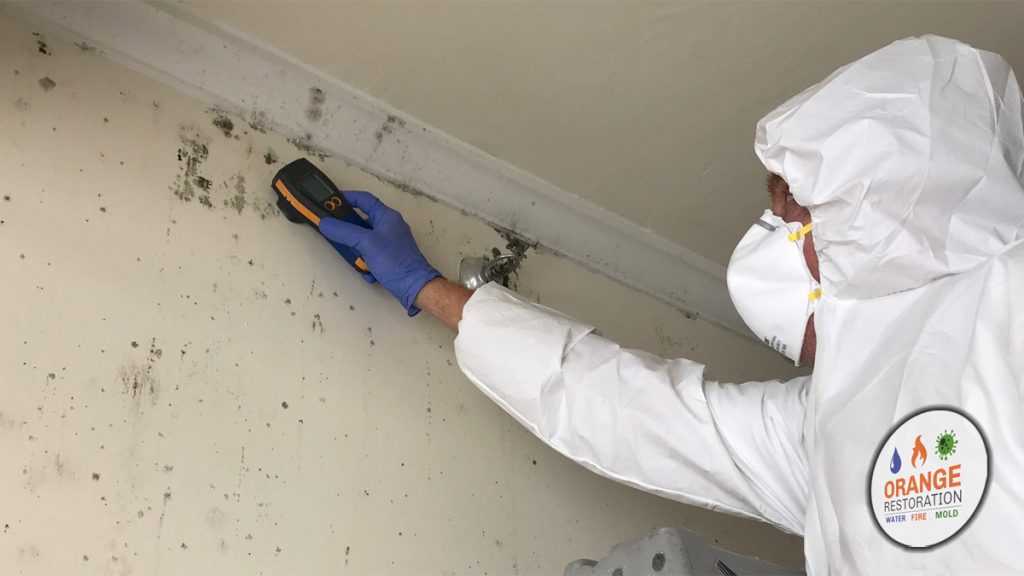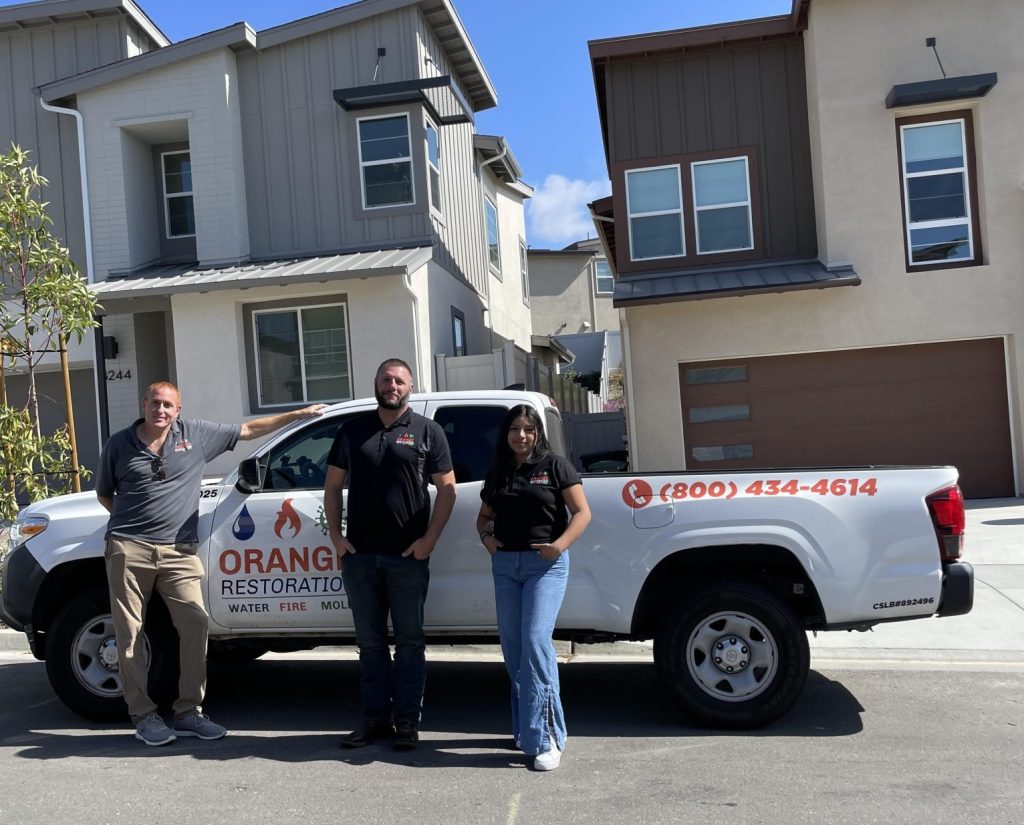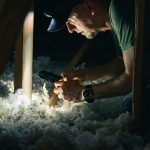Mold in Your Home: Everything You Need To Know About Causes, Warning Signs & Removal

Mold infestations can have some serious negative effects on both your home and your health. It’s worth doing whatever you can to avoid mold growth in your home–whether it’s in your attic, crawl space, garage, kitchen, bathroom, under the floorboards, or anywhere else; whether you take a DIY approach or consult a professional. Mold can weaken the structural integrity of your property, damage insulation, and lead to expensive repairs.
What’s more, the spores released by mold can pose health risks to the people living under your roof. The potential for mold in your home to make you and your loved ones sick is another major reason to address the issue as fast as possible!
Table of Contents
- What Causes Mold in the Home?
- How Does a Mold Issue Spread?
- Types of Mold To Look Out For
- What Are the Warning Signs of Mold?
- How to Prevent Mold in the Attic, Crawl Space, Garage, and the Interior of the Home
- Mold Removal: How To Do It Safely
- Choose Orange Restoration for Mold Removal
- Frequently Asked Questions about Mold in the Home

What Causes Mold in the Home?
Mold in the home doesn’t appear out of nowhere; it’s the result of specific conditions that are identifiable and preventable. Common spaces for mold in Southern California homes are attics, crawl spaces, bathrooms, kitchens, laundry rooms, window sills, vents, fireplaces, chimneys, garages, and underneath flooring. So what causes mold in attic spaces and other parts of your home to occur, exactly? Some common causes include:
- Roof Leaks: Water infiltration from damaged roofs is a primary cause of mold in the attic, other parts of the home, and commercial properties.
- Poor Ventilation: Inadequate airflow can trap moisture. This could result in a breeding ground for mold.
- Not Enough Insulation or Substandard Insulation: Insulation that doesn’t meet the required standards can allow heat to escape, leading to condensation and mold growth.
- Humidity: High indoor humidity levels can lead to moisture accumulation in the attic and other parts of your home that leads to microbial growths such as mold.
Understanding these causes and triggers is the first step in preventing mold in your home.
How Does a Mold Issue Spread?
Mold spreads in the attic, garage, crawl spaces, or inside your home due to a combination of problems. These problems include moisture, poor ventilation, and suitable organic materials. Under these conditions, mold spores can thrive, colonize, and reproduce rapidly, which is a big issue for your home and your health.
Mold typically begins as small patches and can quickly expand, spreading across surfaces and materials. A proactive approach to managing moisture in your home and improving ventilation is essential to prevent the speedy spread of mold.
Types of Mold To Look Out For
While there are numerous types of mold, two common varieties found in homes are black mold and white mold. Here’s what you need to know about each of them:
Black Mold in the Attic, Crawl Space, Garage, and the Interior of the Home (Stachybotrys Chartarum)
- Appearance: Black mold, commonly found in attic spaces and other parts of the home, is often referred to as “toxic mold.” It is known for its slimy and greenish-black appearance. It may appear wet or slimy, which makes it relatively easy to identify.
- Health Concerns: Black mold has earned a nasty reputation due to its potential health risks. While not all strains of black mold are toxic, some can produce mycotoxins that can cause health issues when inhaled or ingested. Common symptoms include respiratory problems, headaches, and skin irritation.
- Causes: Black mold in the attic and other parts of your home is usually the result of long-term moisture exposure. Roof leaks, inadequate ventilation, or high humidity levels can create the ideal conditions for its growth.
- Solution: Due to the health risks associated with black mold, it’s important to hire a professional mold remediation service like Orange Restoration in San Diego to safely remove it. Attempting a DIY black mold removal is not recommended!
White Mold in the Attic, Crawl Space, Garage, and the Interior of the Home (Various Types)
- Appearance: White mold can vary in appearance. This type of mold may look powdery, fluffy, or cotton-like. Unlike black mold, it is usually dry to the touch.
- Health Concerns: While white mold is generally less of a health risk than black mold, it can still trigger allergies and respiratory issues in sensitive people. However, not all types of white mold are harmful.
- Causes: White mold in the home can result from similar conditions as black mold, especially too much moisture and poor ventilation. This type of mold grows on wood, insulation, or other organic materials in the home’s construction.
- Solution: Depending on the extent of the white mold infestation, it may be possible to handle removal as a DIY project. However, if you’re unsure about the type of mold and how to handle it, it’s best to talk to a pro mold remediation service like Orange Restoration in San Diego. (Please note: Due to health concerns, Orange Restoration does not recommend attempting a DIY mold removal project.)
What Are the Warning Signs of Mold?
Identifying mold in its early stages can save you from home damage and health concerns. Common warning signs include musty odors, visible discoloration on wood or insulation, and moisture buildup on surfaces.
In addition, if you notice unexplained health issues or allergies — either in yourself or a family member — these problems may be linked to mold exposure. Recognizing these signs fast and getting them taken care of is a must.
How to Prevent Mold in the Attic, Crawl Space, Garage, and the Interior of the Home
Preventing mold in attic spaces, crawl spaces, bathrooms, garages, and other parts of your home means being proactive and using basic anti-mold measures. These include:
- Regular Inspections: Periodically inspect your home for leaks, cracks, and signs of moisture. Alternatively, you can get a mold expert to do this for you.
- Proper Ventilation: Ensure your attic or crawl space is well-ventilated to maintain optimal humidity levels. The same goes for bathrooms, kitchens, and the rest of your home.
- Effective Insulation: Invest in quality insulation materials to control temperature and moisture.
- Address Leaks Promptly: Repair any roof leaks or plumbing issues as soon as they’re identified.
- Control Indoor Humidity: Use dehumidifiers and exhaust fans to manage indoor humidity levels.
Mold Removal: How To Do It Safely
Effectively removing mold from your home is a task that requires a careful approach to make sure the pesky fungus doesn’t come back. While minor surface mold can often be handled with DIY methods, more extensive or recurring infestations are a cause for calling a pro.
Professional mold removal specialists have the necessary training and equipment to safely and thoroughly eliminate mold from affected areas. They’re pros at addressing both visible growth and underlying causes like leaks or poor ventilation.
What’s more, professionals follow stringent containment, cleaning, and remediation steps to ensure the job is done right, protecting your health and your property. Professionals can provide valuable guidance on preventing future mold issues, making their services an investment in the long-term health and safety of your home.
For peace of mind and a mold-free living space, it’s wise to get the assistance of the experts at Orange Restoration when dealing with significant mold problems.

DIY: Removing Mold
Removing minor mold in the kitchen or bathroom can be a DIY project in some cases. For example, you could follow these steps to remove minor mold issues:
- Safety Precautions: Before starting, wear appropriate protective gear. This gear includes gloves, a mask, and safety goggles to minimize exposure to mold spores.
- Ventilation: Ensure good airflow by opening windows and using fans to create a cross-ventilation system in the attic or crawl space. This helps disperse mold spores and prevent their inhalation as you clean.
- Containment: Isolate the affected area by sealing it off with plastic sheeting or drop cloths, using painter’s tape to secure the edges. This prevents mold spores from spreading and moving to other parts of your home.
- Remove Items: If there are any items or insulation materials that are visibly contaminated with mold, remove and dispose of them properly. Make sure to double-bag and seal any discarded materials to prevent any more contamination.
- Scrubbing: Use a mixture of warm water and mild detergent to scrub the mold-affected surfaces. You can also add a quarter cup of white vinegar to help with mold removal. Scrub gently, and avoid aggressive brushing, which can release more spores.
- Rinse and Dry: After scrubbing, rinse the area with clean water. Then, allow it to dry thoroughly. A dehumidifier can assist in speeding up the drying process.
- Prevention: Identify and address the source of the moisture that prompted the initial mold growth, such as leaks or poor ventilation. Repair these issues to prevent future mold problems.
- Monitor: Keep an eye on the treated area for any signs of mold reappearance. If it returns or persists, it may be a sign of a more significant problem and should be evaluated by a professional. But this is a serious issue, and Orange Restoration does not recommend DIY mold removal.
If you’re planning on trying DIY mold removal in the attic (or another part of your home), make sure you’re only dealing with a small, isolated area (less than 10 square feet) and minimal damage to the structural materials. If the mold issue is more extensive, or if there are concerns about the space’s integrity, it’s best to consult a professional mold removal service like Orange Restoration.
Choose Orange Restoration for Mold Removal
When it comes to removing mold from your home, trust the experts at Orange Restoration, the best choice for garage, crawl space, interior home, and attic mold removal in San Diego!
Their team of professionals specializes in comprehensive mold removal, using the best techniques and equipment to ensure your home is safe and mold-free. With Orange Restoration on your team, you can enjoy a healthier living environment, improved indoor air quality, and the peace of mind that your home is in top condition.
It’s wise to get the assistance and the benefits of experts, such as Yaron Lief, president of Orange Restoration, one of San Diego’s top companies in solving mold problems, who says:
“At Orange Restoration, we don’t just remove mold; we restore peace of mind. We understand that a mold problem can be overwhelming, but our experienced crew will eliminate the issue and ensure that our customers will breathe easily in a healthy, mold-free environment. Their safety is our success.
“In addition to mold remediation,” Lief continues, “Orange Restoration is one of San Diego’s leading companies handling unexpected damage incurred from fire, smoke, water, and flooding emergencies. In fact, we successfully completed the large-scale mold remediation and decontamination at the Natural History Museum in Balboa Park.”
Let Orange Restoration help you maintain a mold-free, healthy home.
Please fill out this form for a free consultation with an
Orange Restoration specialist or call (619) 376-6838.
Frequently Asked Questions about Mold in the Home
Yes, mold in the home can be harmful to your health. Mold spores can become airborne and cause respiratory issues, allergies, and other health problems, particularly in individuals with pre-existing conditions.
It depends on your policy and the cause of the mold.
The time it takes to remove attic mold and mold in other parts of your home fluctuates according to the extent of the infestation. Smaller cases might be resolved in a few days, while more extensive mold issues can take a week or longer to remediate.
Mold can return if the underlying moisture issue isn’t addressed. To prevent its recurrence, fix any leaks, improve insulation and ventilation, and monitor humidity levels in your attic or crawl space.
To maintain a mold-free home, conduct regular inspections, maintain good insulation and ventilation, and address any water leaks or moisture issues promptly. Also, keep an eye on your home’s overall humidity levels and make sure they stay within a safe range.
No, it is not normal to have mold in the kitchen. While kitchens are susceptible to moisture and humidity from cooking, and they can be more prone to mold growth due to poor ventilation or insulation issues, having mold in the kitchen is a sign of a problem.
Mold in the attic or crawl space can potentially spread into the living spaces of your house if left untreated or if certain conditions allow for its movement. Mold spores are lightweight and can become airborne, and they may find their way into the rest of your home.
Media credit: The images in this article are courtesy of Orange Restoration.


